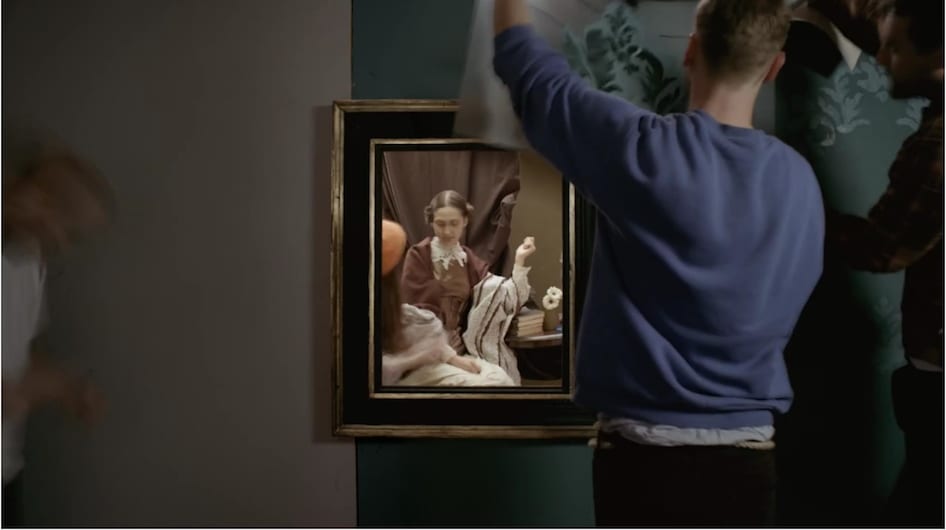How did you come to make the film Ode to Hill and Adamson?
Maisie, who I collaborated with on the film, was asked to have some of her work included in an up-coming exhibition at London’s National Gallery in October this year. Maisie’s work over the last few years has often centred around still photography compositions that re-stage famous and iconic paintings. She had made a low-fi film based on the same concept as a bit of an experiment a few years back and the exhibition’s curator was keen to show it.
We both felt that having work in the National Gallery was such a big deal that we wanted to re-make the film, really embellish the idea and create something much more ‘finished’. The curator was keen on this too and sent us some images of other work that is going to be included in the show and we incorporated this into the film also. The end result will be the film screening next to the original 1844 photographic print by Hill and Adamson that the film references.
Your film is a work of art in itself. What were the main challenges of making the film?
It was important to us that the film felt like a ‘work’ in it’s own right and not a making-of type film, which was a bit of a worry until we saw the material back in the edit. In many ways we took the illusion that Maisie often plays with in her photos one step further by not only re-creating a period image, but also staging it to be hanging in a frame on a wall. A big part of the idea was to lay bare the many different illusions involved, but then still try and end with something refined, beautiful and emotive, even though you’ve seen past all the ‘smoke and mirrors’ at work. All in all it had to be a really pre-planned process so that when we ‘went for it’ we knew it would work. This involved a couple of weeks in a workshop building the set to camera, and testing everything out.
Did you toy with any other ways of shooting the film and what was behind your decision to use stop-frame?
The overall idea of the film was pretty locked from the outset with the fixed camera position, and I think it’s really key to the whole experience. It means an audience just sits back and watches everything unfold and probably helps them feel that nothing is being hidden from them. The film begins in real-time, then moves into long exposure time-lapse, before returning to real time to finish. This seemed natural as we wanted to show the process happen relatively quickly (otherwise you’d have to watch a film seven hours long!!), but also it’s nice to rest a bit on the final image at the end and soak it up.
Was the editing a nightmare – did you have way too much footage or did it just fall into place? What were your main challenges there?
In terms of the whole post process I’m going to be a bit cagey as I don’t want to point out where it’s manipulated… maybe it hasn’t at all!!?! But I will say that the film without a doubt has a had a fantastic contribution from both the editor and the online guys who I am very grateful to.
Was it easier working with three companies (Cap Gun Collective, The Whitehouse, Carbon VFX) owned by the same parent company? Did it make the process smoother in any way?
The whole process went very well and I’m sure that is due to the relationships they all have with each other. It was nice as it felt like everyone was up for it and wanted to make it happen. We shot and did the offline in London and then it was conformed in the US, which I can imagine could add a few hiccups but it was all plain sailing.
(Ode to Hill and Adamson was first show on C4’s Random Acts).
LINKS:
Ode to Hill and Adamson
Directed by Jack Cole and Maisie Broadhead
Produced by Ollie Allgrove at Cap Gun Collective
Edited by James Norris at Whitehouse Post
Post and VFX at Carbon F









